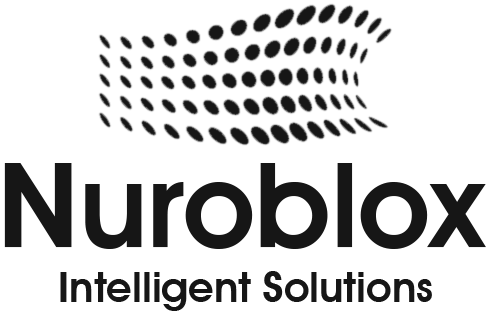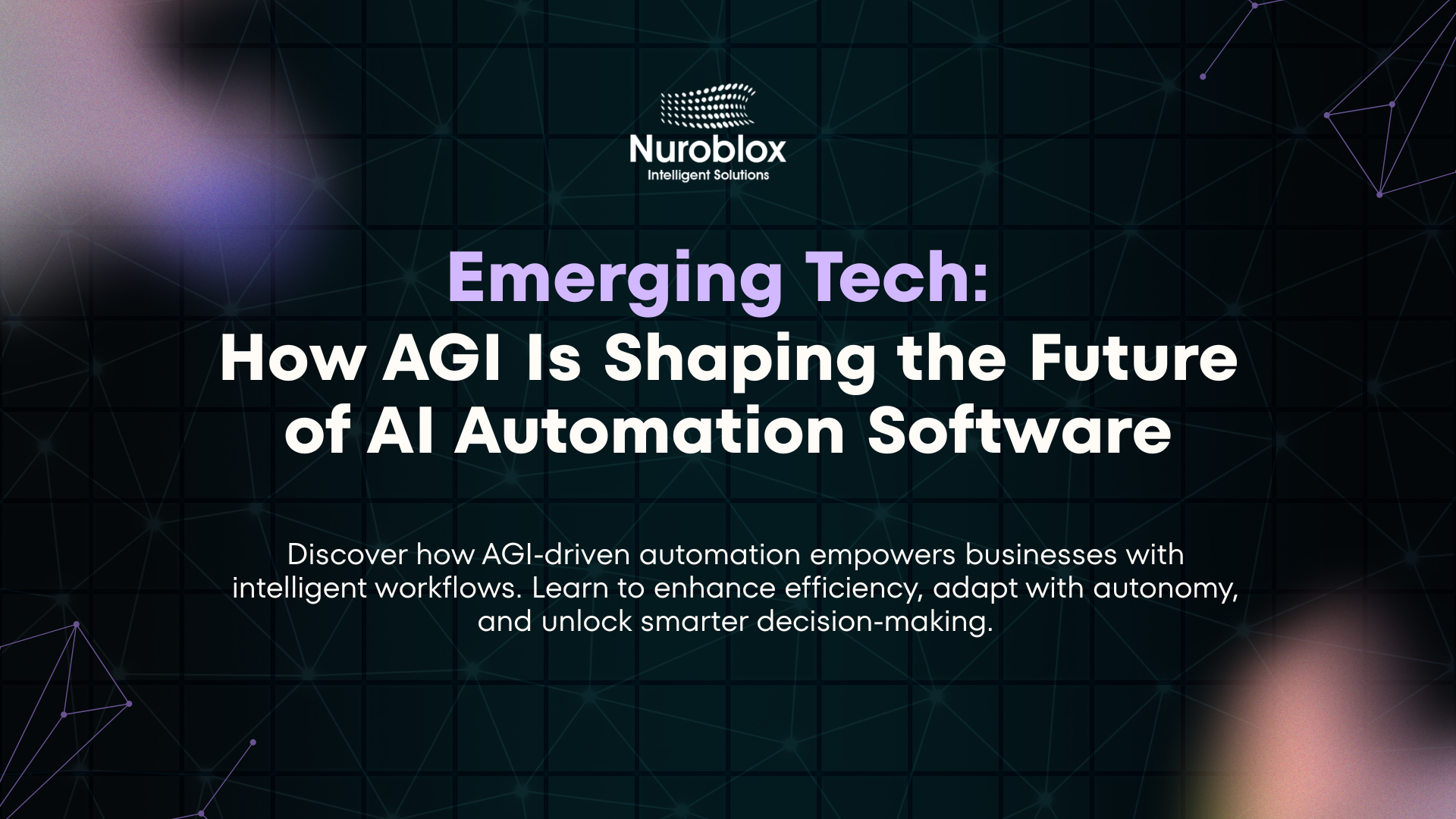Emerging Tech: How AGI Is Shaping the Future of AI Automation Software
The relentless pursuit of operational efficiency has long been a cornerstone of enterprise strategy. For years, businesses have relied on rule-based automation to streamline repetitive tasks, but we are now standing at the precipice of a monumental shift. Traditional automation is reaching its limits, constrained by its inability to handle complexity, adapt to new information, or make nuanced judgments. According to McKinsey, enterprises have the potential to automate up to 50% of their workflows with Artificial Intelligence (AI), yet many remain encumbered by manual processes and fragmented data. The next frontier of business process automation is not just about doing things faster; it’s about doing them smarter.
This evolution is being driven by the rapid advancement toward Artificial General Intelligence (AGI), AI with human-like cognitive abilities. While true, fully-realized AGI is not yet a reality, its foundational principles are giving rise to a more immediate and practical technology: agentic AI. These autonomous AI agents are intelligent systems capable of planning, acting, and learning with minimal human oversight, representing a new paradigm in AI automation software. This article is for business leaders, IT professionals, and strategists seeking to understand how this emerging technology is moving beyond simple task execution to orchestrate complex, intelligent, and autonomous enterprise workflows. We will explore the tangible impacts of AGI-driven automation, examine its real-world applications, and provide a strategic outlook on navigating this transformative era.
From Rule-Based Automation to Intelligent Systems – A Necessary Evolution
For the last decade, Robotic Process Automation (RPA) and other script-based tools have been the workhorses of corporate efficiency. These systems excel at handling predictable, high-volume tasks like data entry, invoice processing, and report generation. However, their core limitation is their rigidity. Traditional automation follows predefined rules and breaks down when faced with exceptions, unstructured data, or changes in the workflow. This necessitates constant manual updates and intervention, creating a bottleneck that hinders true scalability.
AI-powered automation marked the next logical step, integrating machine learning (ML) and natural language processing (NLP) to handle more complex decision-making and data interpretation. These systems can analyze vast datasets, identify patterns, and adapt their behavior to a certain degree. Yet, even this form of AI often operates within a narrow scope, designed to solve a specific problem.
The future of AI automation software lies in transcending these limitations. The goal is to create systems that don’t just follow instructions but understand intent. This is where the principles of AGI become transformative. While we are unlikely to see a complete AGI by 2025, we are already witnessing the integration of “AGI-like” traits into automation software. These systems can reason, solve complex problems, and learn from outcomes, paving the way for a more dynamic and autonomous form of automation.
The Emergence of Agentic AI – A Practical Step Toward AGI
The most significant development in AI automation is the rise of agentic AI. Acknowledged by Gartner as the leading technology trend for 2025, agentic AI represents a pivotal shift from passive, instruction driven AI to active, goal-oriented autonomous systems.
What is Agentic AI?
Agentic AI refers to intelligent agents that can perceive their environment, set goals, make decisions, and execute multi-step actions to achieve an objective with minimal human guidance. Unlike traditional AI tools that require explicit commands for every action, autonomous agents operate with a degree of independence. They are designed to translate knowledge into action, effectively becoming virtual employees capable of managing complex workflows across different applications and systems.
These agents possess several key capabilities that set them apart –
- Contextual Understanding – They can comprehend the nuances of a task and its broader business context.
- Tool Interaction – They are designed to interact with external tools and APIs, allowing them to perform actions like sending emails, updating databases, or scheduling meetings.
- Adaptive Learning – They can learn from feedback and outcomes to continuously refine their performance and adapt to changing conditions.
- Multi-Step Execution – They can break down a high-level goal into a series of smaller, executable steps and pursue them autonomously.
The Tangible Impact of AGI on AI Automation Software
The integration of agentic AI and AGI principles is not a futuristic concept; it is already delivering measurable business outcomes. The Artificial General Intelligence (AGI) market is projected to grow at a CAGR of 32.5%, and for good reason. Organizations that effectively leverage this technology are unlocking new levels of productivity and innovation.
Driving Unprecedented Operational Efficiency
The primary benefit of intelligent automation is a dramatic boost in productivity. A McKinsey report found that businesses implementing AI automation can achieve productivity improvements of 20-40% in targeted processes. This is because agentic AI goes beyond automating simple, repetitive tasks to tackle dynamic and unstructured work.
For example, a leading bicycle manufacturer used AI to analyze real-time delivery data and telemetry to optimize routes, predict maintenance needs, and streamline schedules. This initiative directly led to improved delivery timelines, reduced fuel consumption, and lower service costs. In another case, a global enterprise deployed an AI-powered negotiation workflow that could autonomously generate vendor communications and pricing queries, significantly reducing vendor selection time.
Revolutionizing Software Development and IT Operations (AIOps)
The entire software development lifecycle (SDLC) is being reshaped by AGI-powered tools. These systems are automating highly skilled tasks, improving code quality, and accelerating release cycles.
- Automated Coding and Testing – Tools like GitHub Copilot and Google’s AlphaCode demonstrate the potential for AI to generate code, suggest solutions, and even solve complex programming challenges from natural language descriptions. AGI can write unit tests, perform system-level testing, and identify bugs, drastically reducing manual effort and improving code reliability.
- Intelligent Code Refactoring and Self-Healing Software – AGI can analyze existing codebases to suggest improvements for readability and maintainability. Furthermore, it opens the door to self-healing software that can detect, diagnose, and fix errors autonomously, improving system reliability and reducing maintenance overhead.
- DevOps and AIOps Synergy – When integrated into DevOps workflows, AI provides deep insights into operational performance, automates testing and monitoring, and accelerates feedback loops. This synergy allows organizations to deliver higher-quality software faster and more reliably.
Enabling Hyper-Personalization and Superior Customer Experiences
AGI’s ability to analyze billions of customer interactions and transactions in real time is enabling a new era of hyper-personalization. By understanding individual customer needs and context, businesses can deliver tailored recommendations, targeted promotions, and proactive support.
A compelling example comes from a global insurance provider that implemented a generative AI solution to handle customer email queries. By learning from historical communications, the system crafts intelligent, intent-aware responses, reducing the average response time from 24 hours to under one minute while maintaining high accuracy and significantly cutting operational costs. This level of responsiveness was previously unattainable at scale.
Real-World Use Cases – AGI and Agentic AI in Enterprise Automation
The application of AGI and agentic AI spans nearly every industry, transforming core business functions from the back office to the front lines. Here are some high-impact use cases where this technology is already proving its value –
- Finance and Banking – AI agents are automating loan application processing by collecting documents, identifying missing information, and drafting approval packages. In investment, AGI systems analyze financial statements, news, and market data to identify patterns and predictive insights, matching or even outperforming human analysts. JPMorgan Chase’s COiN platform uses AI to automate contract analysis, while Mastercard leverages it for real-time fraud detection.
- Healthcare – AGI is accelerating drug discovery and helping doctors make more informed decisions for complex diseases by analyzing vast medical literature and patient data, as seen with IBM Watson Health. It is also automating administrative processes and personalizing treatment plans by integrating genetic, lifestyle, and medical history data.
- Supply Chain and Manufacturing – In logistics, AI optimizes routes, predicts maintenance needs, and manages fleet schedules. For manufacturing, AGI powers “Industry 5.0” by optimizing operations adaptively from demand forecasting and predictive maintenance to quality control and inventory management.
- Cybersecurity – Agentic AI is critical for modern cybersecurity. Systems like Darktrace and CrowdStrike Falcon use AI to proactively analyze network traffic, predict future attacks, and provide autonomous security responses without requiring human intervention at every stage.
- Marketing and Sales – Autonomous AI agents are transforming go-to-market strategies. Platforms like SuperAGI deploy AI Sales Development Representatives (SDRs) that can personalize cold email outreach at scale, qualify inbound leads, and manage customer nurture campaigns, freeing up human teams to focus on closing deals.

Successfully deploying autonomous AI agents requires a strategic approach. These systems are powerful, but their implementation comes with challenges that must be managed.
- Start with a Clear Scope – It is best to begin with narrow, well-defined tasks that are easy to test and evaluate. This allows the organization to build trust in the system and measure its impact accurately.
- Prioritize Transparency and Governance – The decision-making logic of an AI agent must be traceable and auditable. Enterprises should demand transparency and ensure that every action taken by an agent is logged. Security and compliance are paramount; agents should operate on a principle of least privilege, and a human-in-the-loop review may be necessary for high-impact actions.
- Focus on Augmentation, Not Just Replacement – The most immediate and powerful impact of AGI-driven automation is its ability to augment human capabilities. Nearly 72% of business leaders in the U.S. report that their employees use AI daily. By automating mundane, repetitive tasks, AI frees up human talent to focus on strategic, creative, and complex problem-solving activities. AI can lower skill barriers, helping more people achieve proficiency in specialized fields.
Beyond Automation – The Dawn of the Autonomous Enterprise
The shift from traditional automation to intelligent, autonomous systems is more than an incremental improvement; it is a fundamental transformation of how businesses operate. We are moving from a world where humans automate tasks to one where they orchestrate intelligent systems that manage entire end-to-end workflows. This evolution marks the dawn of the autonomous enterprise, an organization that is more adaptive, resilient, and intelligent.
The technologies driving this change, agentic AI and the emerging principles of AGI are no longer theoretical. They are being deployed today to solve complex business problems, drive unprecedented efficiency, and create new forms of value. The journey toward full enterprise autonomy is just beginning, and it requires a clear vision and a strategic commitment to innovation. As these autonomous systems become more deeply integrated into your operations, the critical question you must answer is this – How will your organization redefine value and restructure its strategic priorities to compete in an AI-native world?


